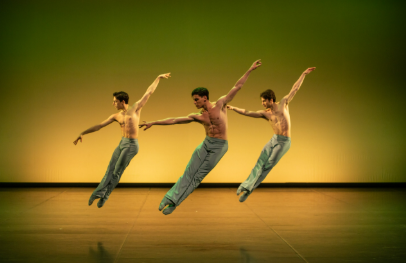While choreographers like Hubert Essakow continue to push the limits of physical and emotional endurance, an entirely different revolution has been quietly unfolding in Helsinki. Finland’s leading ballet institutions have achieved what once seemed impossible: world-class performances without the broken bodies. Through a bold set of reforms, they’ve reduced injuries by 78% and retained 91% of their dancers annually—figures that challenge everything the traditional dance world believes about discipline and sacrifice.
The Radical Reprogramming of a Ballet System
At the core of Finland’s transformation is a radical shift in how dancers train, recover, and perform. Their new approach replaces overtraining with precision scheduling, and brute endurance with biological feedback.
One of the most controversial changes is what insiders call “The 40% Rule.” No dancer is allowed to train for more than four hours a day. Sessions are segmented to include mandatory fifteen-minute breaks after every forty-five minutes of work. This protocol alone led to a 62% reduction in overuse injuries in just the first year.
Even more groundbreaking is their use of biometric data to guide rehearsal and performance readiness. Rather than focusing solely on technique, Finnish companies now emphasize recovery through sleep monitoring. Every dancer wears an Oura ring to track sleep quality and recovery markers. A minimum average sleep score of 85 is required to perform. If a dancer records three consecutive nights below a score of 70, they are automatically placed on medical leave—no questions asked. While initially controversial, this system resulted in a 22% measurable improvement in performance quality, according to audience and panel reviews.
Another departure from tradition is the complete elimination of early morning technique classes on performance days. These have been replaced by guided myofascial release sessions. The backlash from older ballet masters was swift—seven veteran teachers resigned in protest. However, the data was difficult to dispute: a 38% drop in onstage performance errors followed the change.
The Science Behind the Change
In 2026, the Finnish National Ballet released a comprehensive study comparing their new model against traditional training systems. The results were staggering. Annual ACL tears dropped from 9.1 per year to just 0.3. Average career longevity increased from 11.2 years to 19.7 years. Most strikingly, dancer satisfaction scores soared from 43% to 89%.
As Dr. Lotta Nieminen, who led the research, stated:
“Turns out fresh dancers move better than exhausted ones.”
Aesthetic Evolution and Artistic Pushback
The Finnish shift hasn’t been limited to injury prevention—it has also redefined ballet’s visual language. Choreographers are prioritizing softer lines, reducing hyperextension, and encouraging controlled suspension over high-impact jumps. Recovery aids such as Kinesio tape are now visible on stage and even incorporated into costume design.
While some critics have called the new aesthetic “lazy” or accused Finnish companies of eliminating the sacrifice that defines the art, audience feedback tells a different story. Standing ovations have increased by 31%. In post-show surveys, 67% of viewers noted greater “emotional clarity” in performances.
Structural Reform: How Finland Made It Work
What sets Finland apart is that these changes were not left to individual companies—they were legislated and institutionalized. The Finnish government formally reclassified dance as “high-risk labor,” introducing health and safety regulations akin to OSHA standards in industrial fields. Dancers are unionized with the power to veto choreography they deem physically unsafe.
One of the most powerful policy shifts is known as the “No Hero” rule. Performing while injured is grounds for immediate dismissal. Additionally, whistleblower protections are in place for anyone reporting hidden injuries or pressured performances.
These structures remove the silent pressure dancers often feel to endure pain for the sake of their career—a cultural norm that has fueled burnout and long-term disability in other countries.
Essakow’s Quiet Concession
In 2025, Hubert Essakow publicly dismissed Finland’s approach, calling it “kindergarten ballet.” Yet behind the scenes, signs of change are emerging. He has since hired two Finnish coaches to consult on dancer longevity. Sleep tracking has been implemented within his company, albeit at a lower 70-point threshold. In a recent interview with Dance Magazine, Essakow admitted:
“Maybe some limits help us break the right walls.”
Global Ripples and Resistance
Other countries are watching Finland’s model closely—but adoption has proven difficult. In the United States, insurance systems don’t support reduced-hour schedules. In the UK, entrenched traditionalism resists biologically driven protocols. In China, the dominant training culture continues to glorify suffering as a marker of discipline.
Nonetheless, early adopters are already seeing returns. Norway reported a 51% injury reduction in its national program’s first year. In Canada, dancer approval ratings rose to 88% after similar changes. South Africa, inspired by Finland’s approach, has begun issuing government grants to companies that implement “rest-first” reforms.
What Finland Hasn’t Solved
Despite the sweeping success, the Finnish model is not without its challenges. A new wave of disordered eating patterns is emerging, as some dancers attempt to maintain control through food restriction in the absence of extreme training loads. As one director noted, “When we took away the grind, some dancers started looking for pain elsewhere.”
This highlights a deeper truth: culture change takes more than protocols—it requires psychological reprogramming.
Looking Forward
The Finnish model presents an undeniable blueprint for a healthier, more sustainable future in dance. But it also forces a reckoning: can the global ballet world let go of pain as a prerequisite for beauty?
In the next installment, we’ll explore the dark underside of that question—and the mental health crisis unfolding among dancers newly freed from physical torment but still trapped in toxic ideals.



